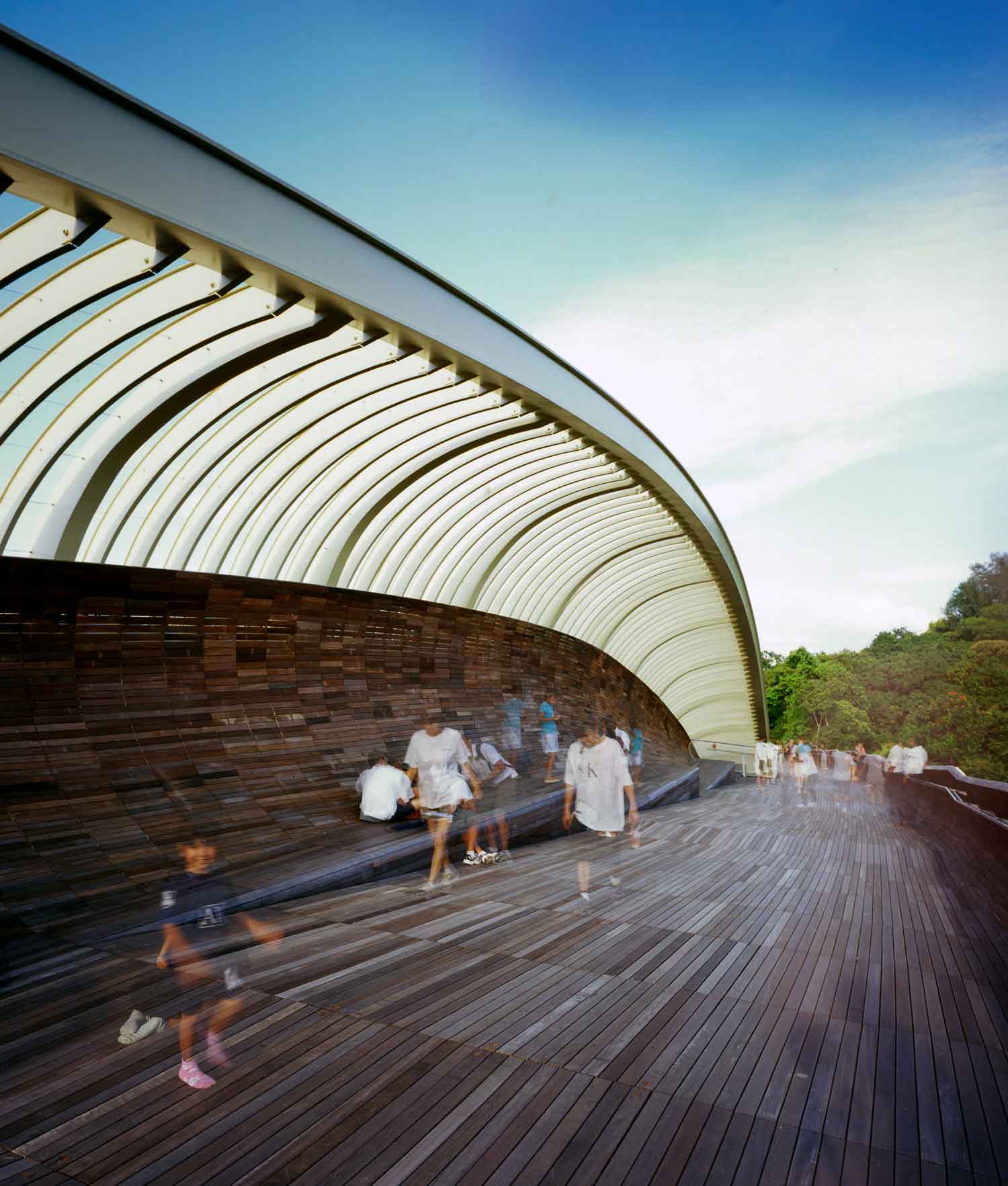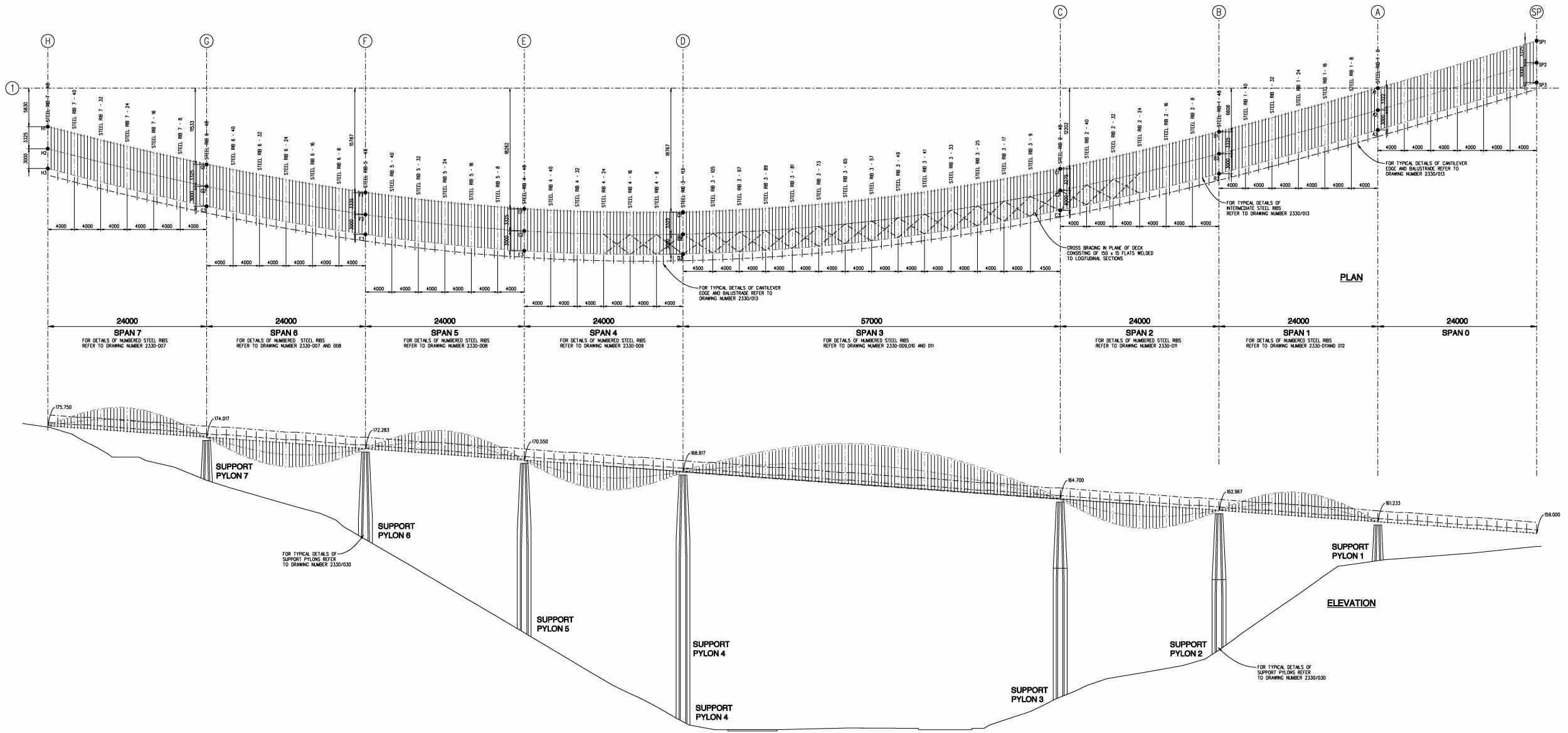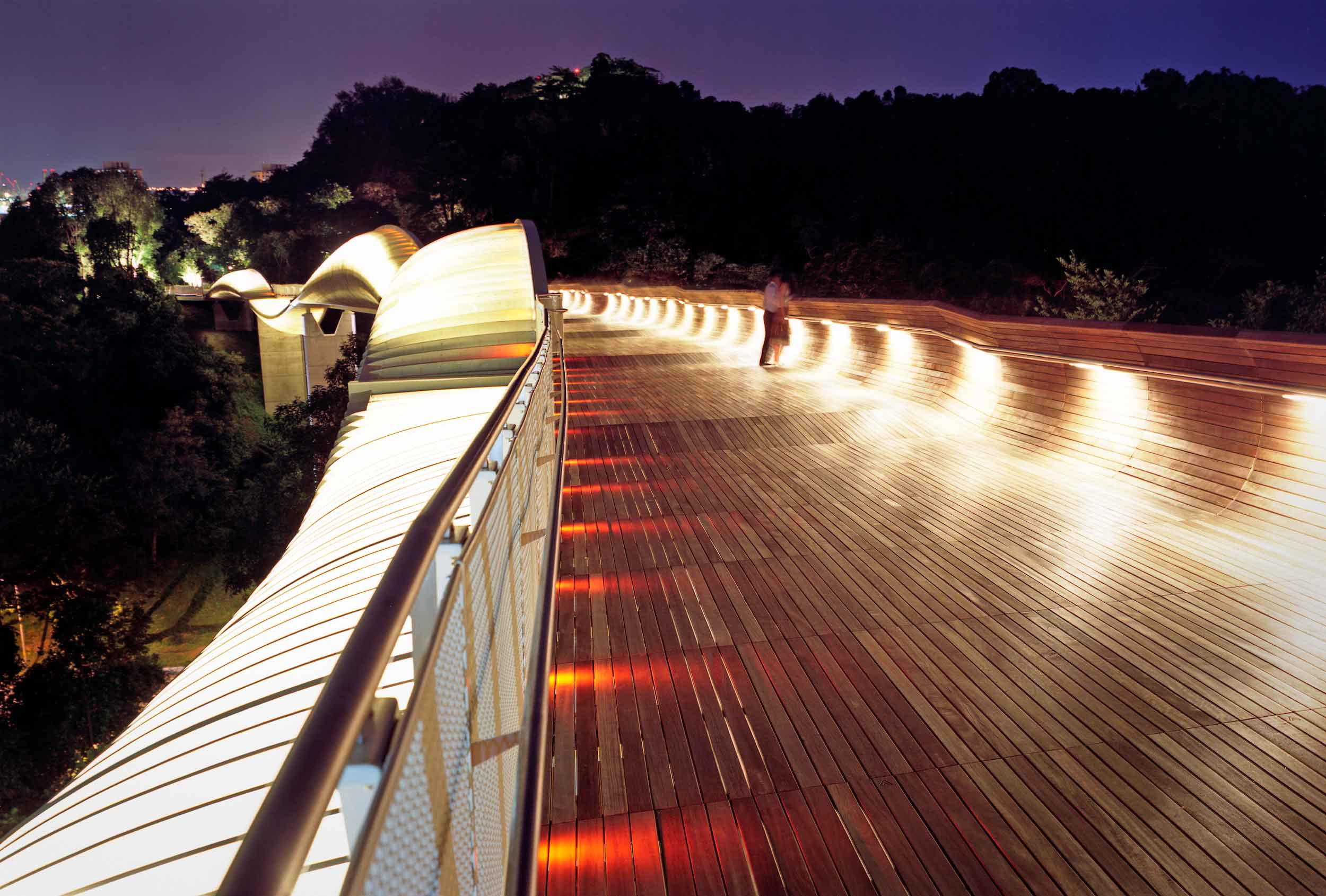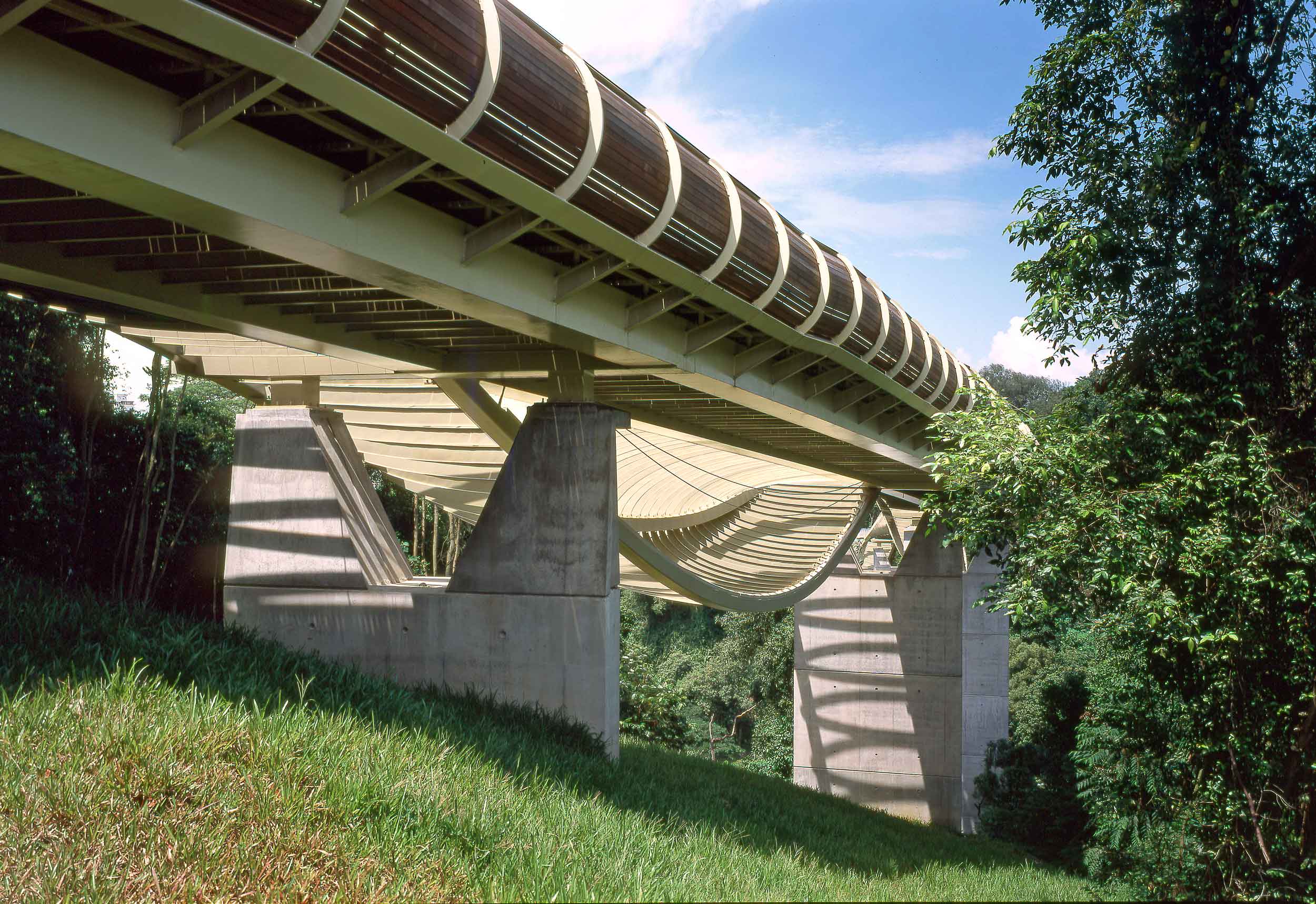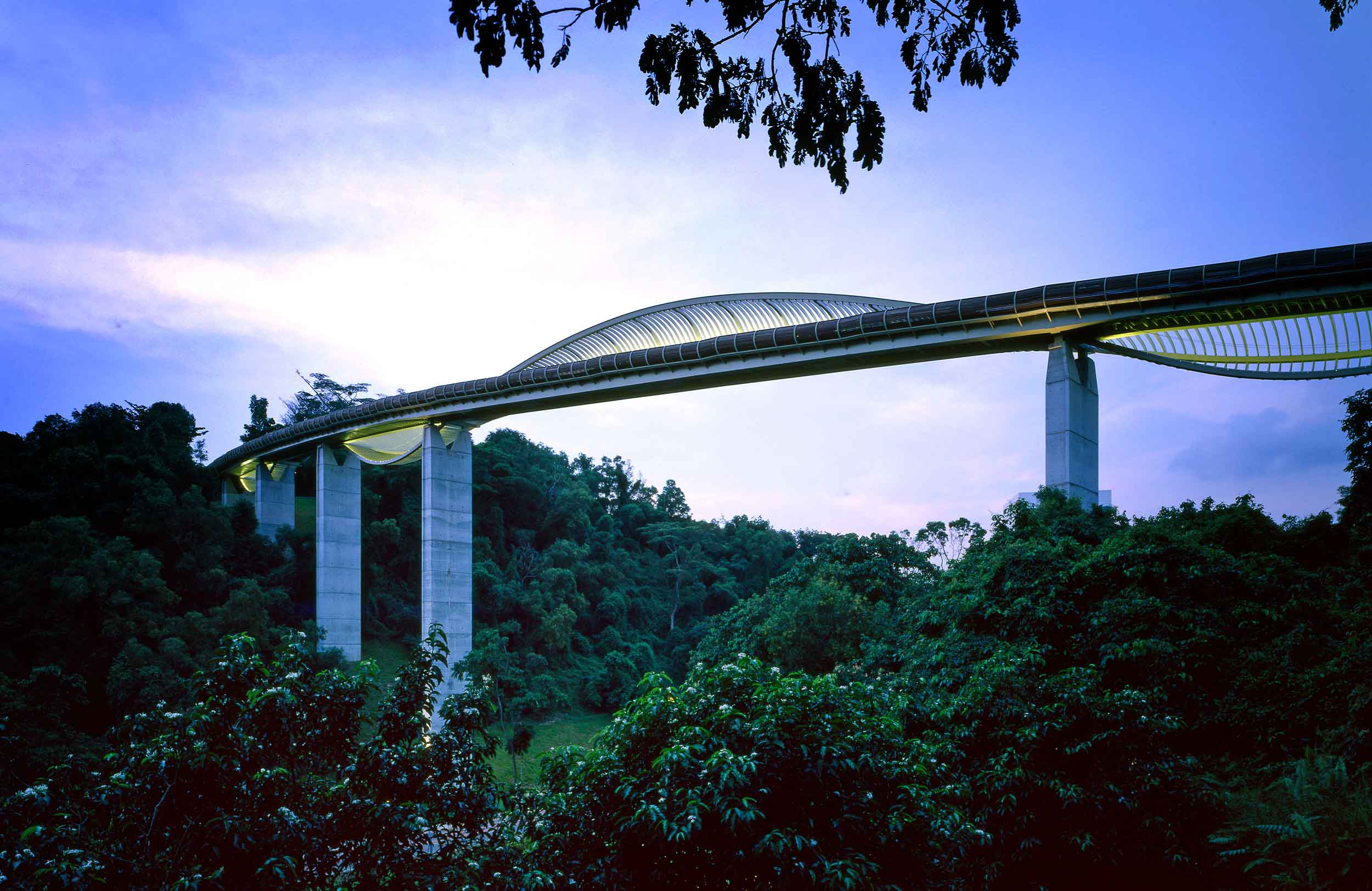
Curving its way across the canopies of Singapore’s parkland, our sinusoidal design for a 284 m footbridge achieved success in both function and form, overcoming vast spans with a mix of highly sustainable materials and an organic appearance that integrates with the surrounding landscape.
Pedestrian bridge of seven spans, curving high above a six-lane highway
The bridge has seven spans in all, but these are not entirely regular, particularly due to the position of a six-lane highway below. Several options were considered for the supporting pylons. We had to find a balance between budget and feasible loadings, whilst considering certain practicalities. We reviewed a hybrid option, combining concrete and steel, which reduced the cross-section but had huge budget implications and created non-compliant deflection figures. Returning to concrete therefore, we created a structure of sufficient rigidity; stability of the walkway was provided laterally by the pylons and longitudinally by tying of lower deck members.
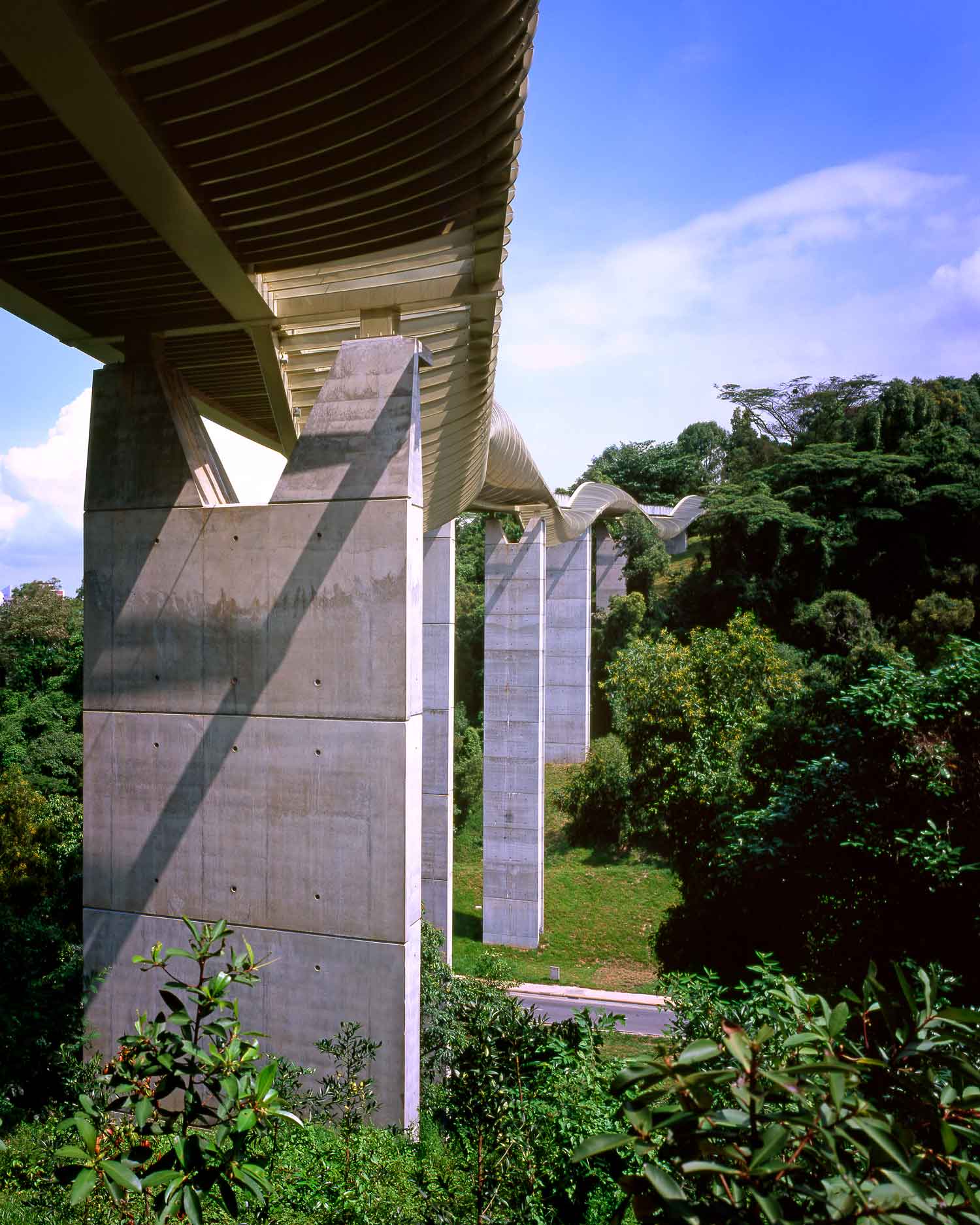
We designed the folded, three-dimensional surface-form around a mathematical concept, with the formula proposed by architects IJP. This traditional, human approach to the geometry enabled us to enter the information into ‘Mathcad’ and model the structure with complete clarity. Though the method was simple, the model created was more complex, changing in cross-section, rising over its length and curving horizontally to allow the gradient to be met with subtlety. At this stage the setting up of a collaborative BIM system was crucial, enabling complete coordination across the design team.
Though our 3D model was suitable for our needs, we unravelled this into 2D sections following lengthy discussions with local contractors; these could then be used by local craftsmen to enable them to hand cut the decking and set out to the nearest 3D coordinates. We sourced Yellow Balau, a tropical hardwood, using a pioneering DNA-tracking procedure to establish its legality and sustainability.
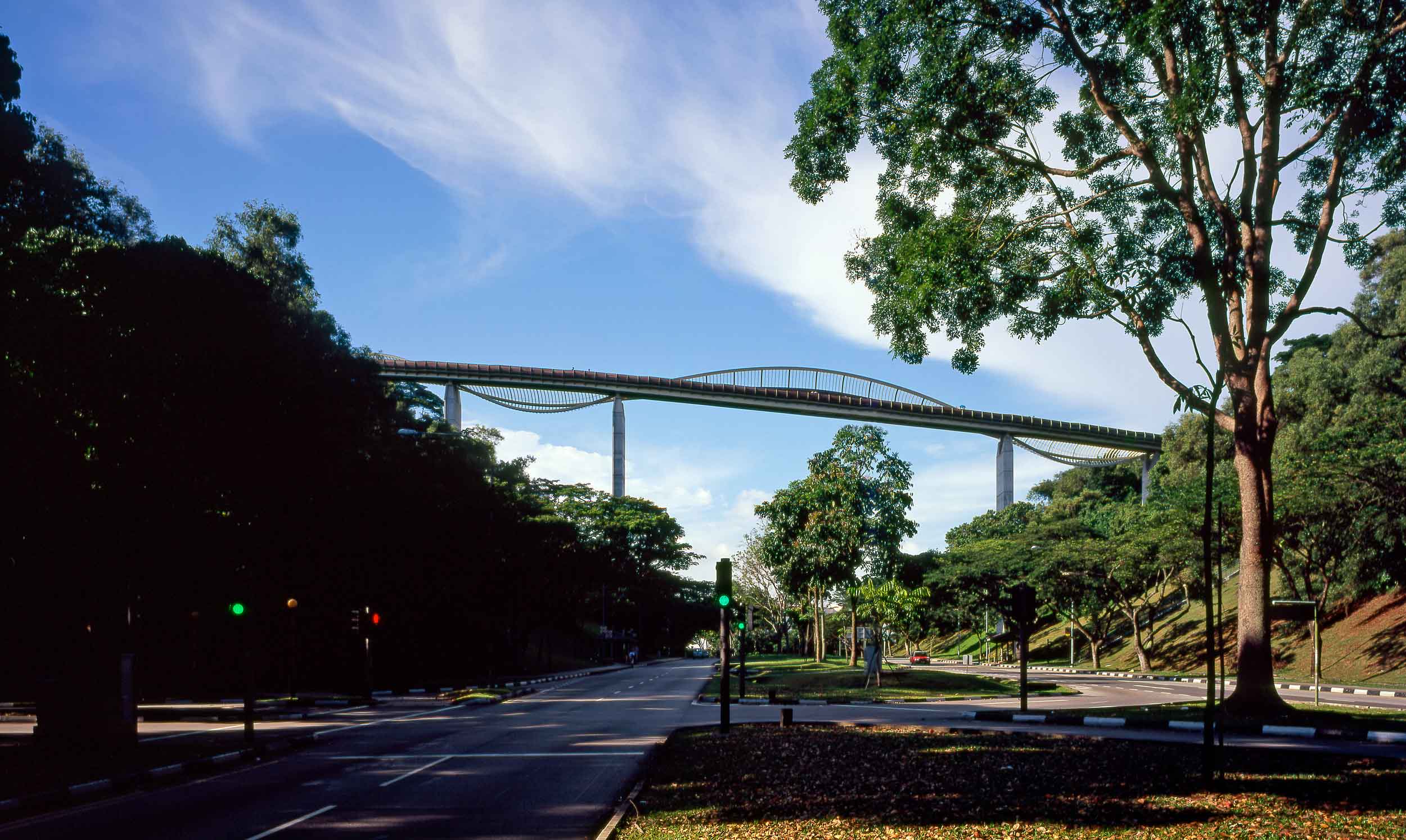
2009 Singapore Steel Society Structural Steel Design Award
2009 President’s Design Award – Design of the Year
